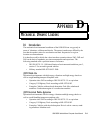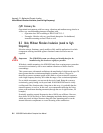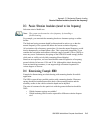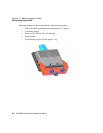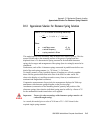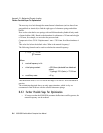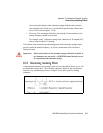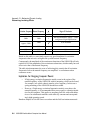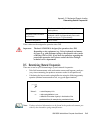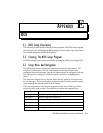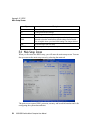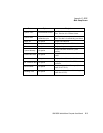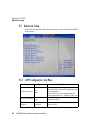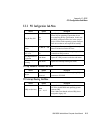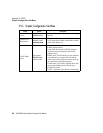
8580/8590 Vehicle-Mount Computer User Manual D-9
Appendix D: Mechanical Dynamic Loading
Determining Natural Frequencies
These values can be assigned to operation class 5M3.
Important: The basic 8580/8590 is designed for operation class 5M3.
Depending on the equipment (e.g. 24-key keyboard) and mount-
ing types (e.g. with elastomer springs), the operation class can be
reduced to 5M2 or 5M1. If you have any questions regarding the
permissible operation class, please contact the Psion Teklogix
technical service department.
D.5 Determining Natural Frequencies
There are several ways of determining a system's natural frequencies:
• Take field measurements with acceleration sensors and frequency analyses
(very time-consuming, but produces accurate results for all spatial axes)
• Calculating the known static spring deflection using the following quantity
equation (minimal measurement work, very good approximation)
Note: Further technical information can be found in the product documents pro-
vided by the elastomer spring manufacturers.
Track:
Warehouses with loading thresholds, potholes and
pallet splinters.
Amplitude of the excitation
accelerations:
Mean value ±1g to ±2g for all three spatial axes
with peak values ±5g approximately twice each
minute and ±8g to ±13g occasionally.
Excitation frequencies: 5Hz to 200Hz
Where: f
e
= natural frequency in Hz
x
st
= static spring deflection in mm
= deflection of the center of gravity in the direction of the
gravitational force (for example using a mechanical timer)
Stx
f
e
8,15
≈



